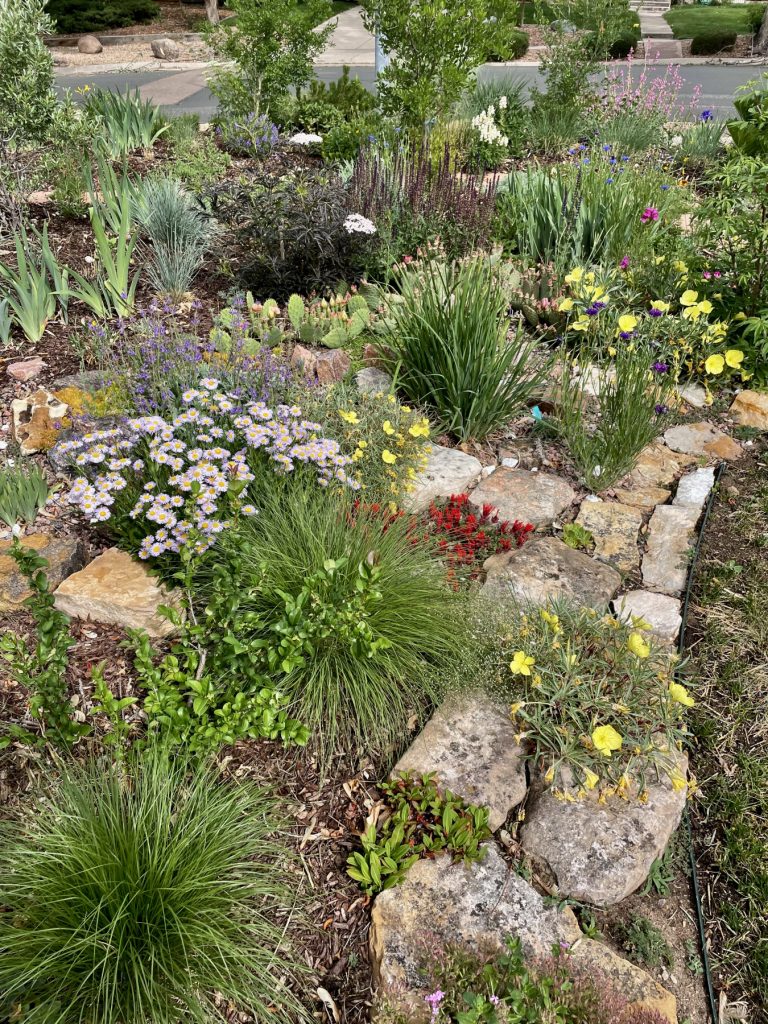The past few weeks have been quite exhilarating for gardeners: chores to tackle like cleaning out the potting shed, waking up the garden then attacking with vigor all the prepping, planting, and sorting before summer heat sets in. Along the Front Range the weather has been mixed, to say the least, with 90 degrees F in the day, 40s at night. Some rain, but no hail – a small yet kind mercy. But the highpoint was finally picking up the threads of garden visits, tours, and conferences, which over the past two weeks took me all over the Denver-Boulder area, with a terrific Plant Select annual meeting at Denver Botanic Gardens. Now positively bursting with energy and inspiration in equal parts, brings home how I’ve been sleep-walking for the past two pandemic years, but by no means brain dead while so doing.

Reading took up a good deal of my time, especially Simon Schama’s Landscape and Memory. It’s a weighty tome, but a must read for a garden-history maven, dealing as it does with our appropriation of Nature as culture signposts. Or is it the other way around? Does Nature deal the winning hand and shape our cultural responses through our shared belief in its sacredness? A belief that has been passed down through millennia, across all borders, and given substance by ever-shifting cultural trends in poetry, music, art, and, naturally, garden design and landscaping; today, the sacredness of Nature is being expressed by movements like re-wilding, prairie gardens, meadow lawns, native plants, steppe gardens, and the return to favor of th rock garden, particularly in its current iteration, the crevice garden. To my mind, it’s a style that seems best suited rocky regions, but it can feel right at home in urban centers when constructed from busted-up concrete. This was brought home at the Plant Select conference where Kenton Seth’s and Paul Sprigg’s book, The Crevice Garden: How to make the perfect home for plants from rocky places was a focus of the day.

And with that my memories turned to the gardens I’ve made, and the acceptance of what has become of them, which is they are gone, because if anything is ephemeral, it’s a garden. With that in mind, and the recognition that technology is also not forever, I pulled together the digital files, faded photos and 35mm slides that are the record of my gardens and turned them into photobooks, with text and captions. Books tend to long life, and these books make physical the memories of my vanished gardens that today shape my response to nature and the landscape around my home. And as I garden, I recognize in what I do, carry-overs from my past.

But…back to the future: perhaps all this musing is fired by a lecture I’m preparing for my upcoming presentation at the San Antonio Botanical Garden. The context is a review of what I’ve learned in my gardening life from the gardens I’ve made, the garden-makers I’ve met, and the hundreds of gardens I‘ve visited and written about, which, inevitably, shaped my garden life. No small task but thrilling…and just a touch bittersweet. Cherche le temps perdu.
©Text and photos Ethne Clarke, 2022, unless credited otherwise
For information about Seth’s and Sprigg’s book visit https://filbertpress.com/the-crevice-garden/
Learn about Plant Select’s mission and plants that carry their imprimatur at https://plantselect.org/
Link to the publisher of Landscape and Memory: https://tinyurl.com/3jcn6e4z










